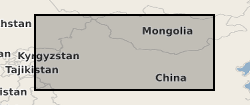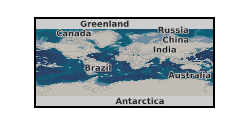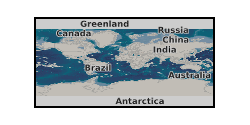Zircon
Type of resources
Topics
Keywords
Contact for the resource
Provided by
Years
Formats
Representation types
Update frequencies
-

Detrital zircon age data, details of Expedition 362 samples . For more information see published report, https://doi.org/10.1016/j.epsl.2017.07.019 IODP Sites U1480–U1481, located on the Indian oceanic plate, east of the NinetyEast Ridge and west of the north Sumatran subduction margin Site U1480 ~ 3°2.0447'N 91°36.3481'E 4147.5 Site U1481 ~ 2°45.261'N 91°45.5771'E
-

The dataset contains detrital zircon U-Pb ages from a large scale detrital provenance study of modern and recent sand and silt from the Chinese Loess Plateau (CLP) and its proposed sources in the Yellow River, its Tibetan headwaters, and the Taklamakan Desert, which lies upwind from the CLP. (NERC grant NE/I009248/1)
-

Nanoscopic (50 < size < 150 nm) magnetic particles embedded within the unaltered interior of mineral crystals like zircons (ZrSiO 4 ) make ideal candidates to record the information about the earth's magnetic field (geodynamo). Information regarding the magnitude of the field can be obtained by measuring the natural remnant magnetization (NRM) of these carriers and further information on the approximate size range of the carriers can be obtained by carrying out thermal remnant magnetization measurements (TRM). However very little is known about the actual morphology and spatial distribution of these carriers in order to understand the fundamental parameters influencing paleomagnetic recording. We propose to image pristine zircons crystals with simple geological histories containing large remnant magnetization using ptychotomography in order to investigate the size, shape and spatial distribution of nano-paleomagnetic carriers. This would also give us an opportunity to fine tune the ptychotomographic setup at I13-coherence branch. This data package consists of 3D maps of Bishop Tuff Zircons, relatively young. The folders contain a stack of .tiff files which can be loaded into imagej, dragonfly, aviso for segmentation purposes.
-

Isotope analysis data. Project details: The continental crust is our only archive of Earth history; not just of the crust itself but of the hydrosphere, atmosphere and biosphere, and of the deep Earth through its interactions with the crust. This archive, like the rock record itself, is incomplete and much effort is focused on interrogating the crust to gain a clearer and more complete picture of Earth history. The continental rock record is episodic with, for example, ages of igneous crystallization, metamorphism, continental margins, and seawater and atmospheric proxies distributed about a series of peaks and troughs that in part correspond with the cycle of supercontinent assembly and dispersal. At the core of the debate is what these well-established peaks of ages in the geological record represent and how they develop. The peaks of ages correspond with periods of global assembly of continents to form supercontinents. The project will address whether the peaks of ages are primary features associated with supercontinent assembly or break up, or they are they secondary features representing greater preservation potential at the times of supercontinent assembly. Our work will focus on the Rodinian supercontinent cycle, which extends from initiation of convergent plate interaction around 1.7 Ga, to continental collision at 1.1-1.0 Ga during the Grenville orogeny, to final breakup of the supercontinent by 0.54 Ga. Detrital zircons from sedimentary units throughout the supercontinent cycle provide a record of the magmatic activity for which the igneous rocks are often no longer preserved. We will determine (i) the ages ranges of magmatic activity preserved in the sedimentary rocks in the 600 Ma pre-collision phase, and (ii) how and when the distinctive Grenville peak of ages developed by comparing the zircon record from samples pre-, syn- and post- Rodinian supercontinent assembly with estimated volumes of magma and numbers of zircons produced during the same interval. This will differentiate primary generation processes from secondary processes, constraining when the dominant age peak developed, the tectonic processes that operated, and hence the method by which it developed. The wider implications of when the continental crust formed are considerable. Studies of continental growth continue to uncritically assume that the geological and isotopic record provide insight into processes of crust formation. Until it can be established whether the record is the outcome of generational or preservational processes, or a combination of both, then drawing conclusions on this fundamental question in the Earth Sciences are premature. If the record is a preservational record then this impacts on understanding continental growth through time and on secondary questions of how the crustal record is used to unravel the temporal evolution of the hydrosphere and biosphere, and the distribution of mineral deposits.
-

Zircon U-Pb isotope data are presented for eight plutonic rocks from the Masirah ophiolite and one plutonic rock from the Ra's Madrakah ophiolite (south east Oman). These data constrain the age of formation of the two ophiolite nappes exposed on Masirah Island (early Cretaceous), whereas two intrusions with younger ages (late Cretaceous) overlap with the proposed emplacement age of the ophiolite. The data cover two sites in the Masirah Lower Nappe, two sites in the Masirah Upper Nappe (on Masirah Island, off the SE coast of Oman) and one site on Ra's Madrakah (on the mainland of Oman). The interpretation and discussion of these data form part of a manuscript submitted to Geochemistry, Geophysics, Geosystems. Data collection was done using chemical abrasion isotope dilution thermal ionisation mass spectrometry (CA-ID-TIMS) at the NERC Isotope Geosciences Laboratories at the British geological Survey, supported by NERC Isotope Geosciences Facilities award IP-1919-0619. This work resulted from a PhD project funded by NERC GW4+ DTP grant NE/L002434/1.
 NERC Data Catalogue Service
NERC Data Catalogue Service